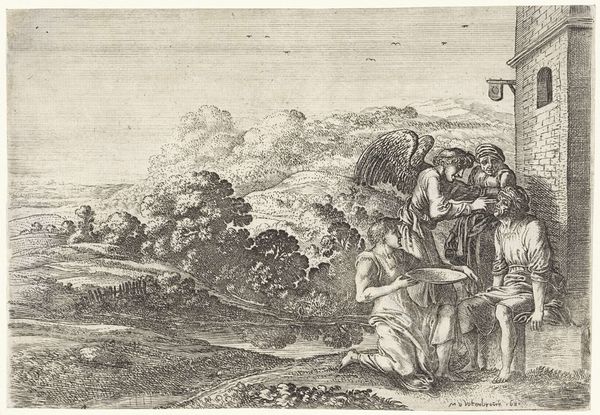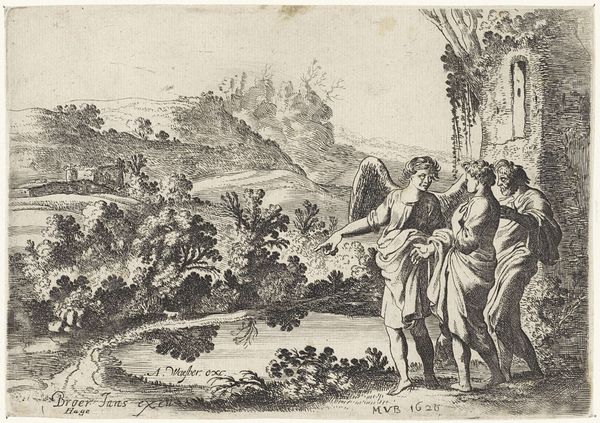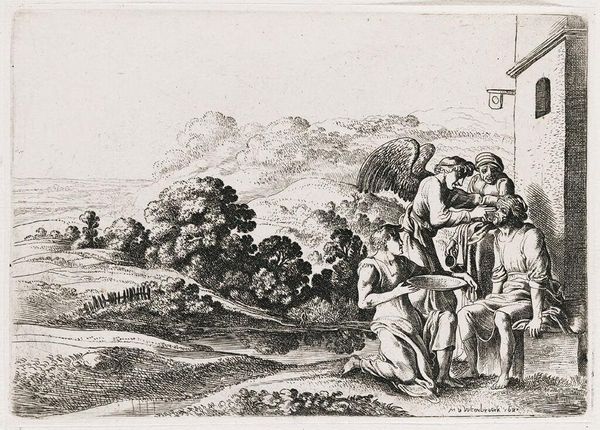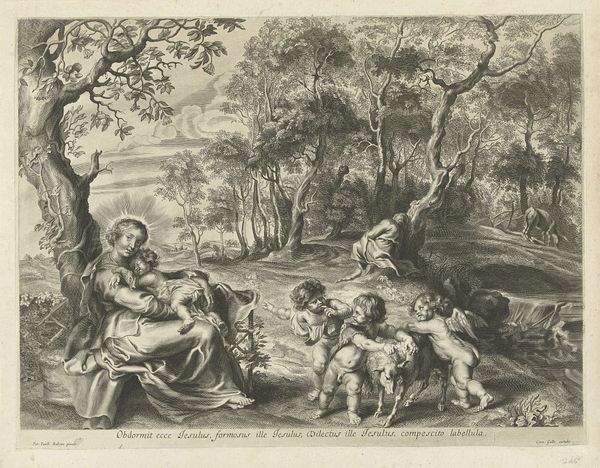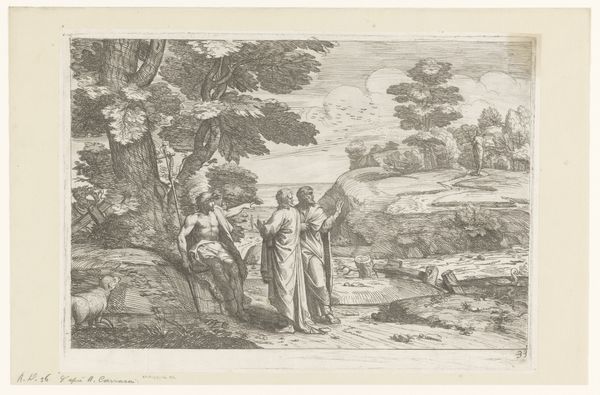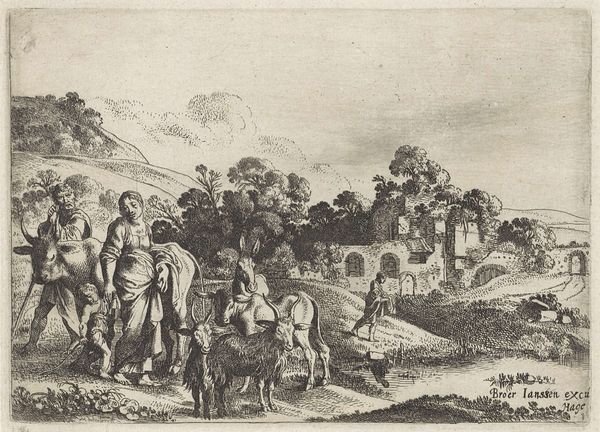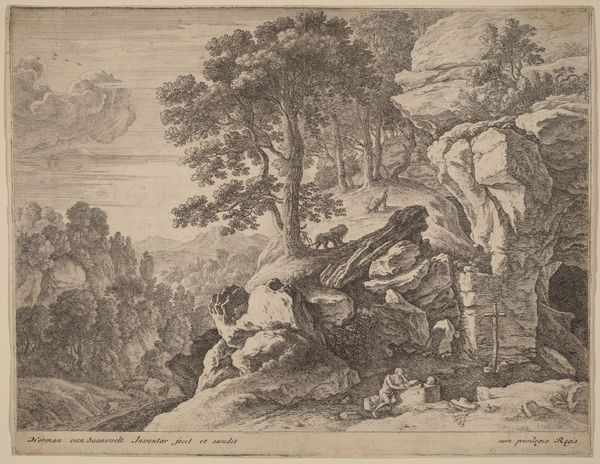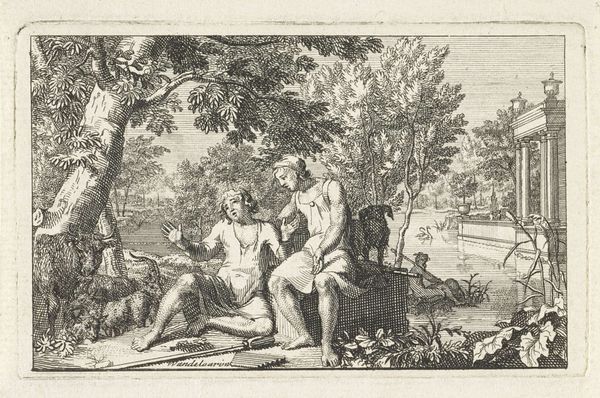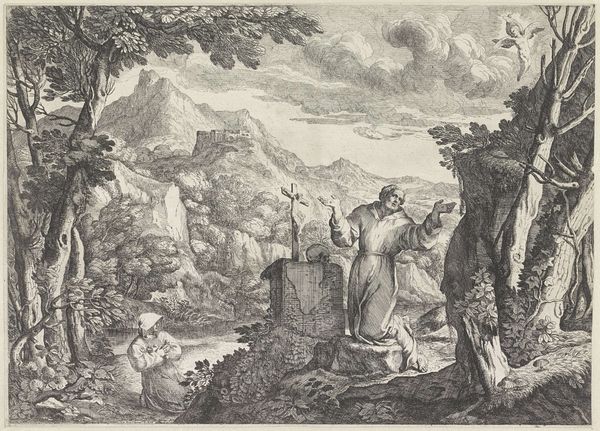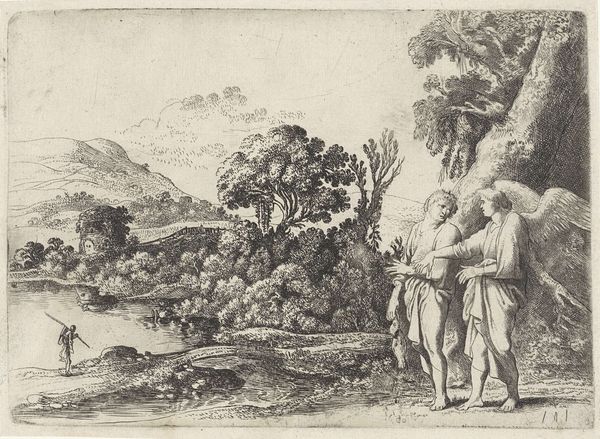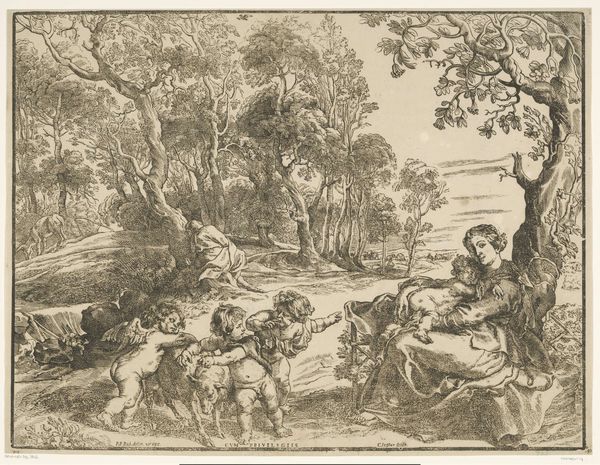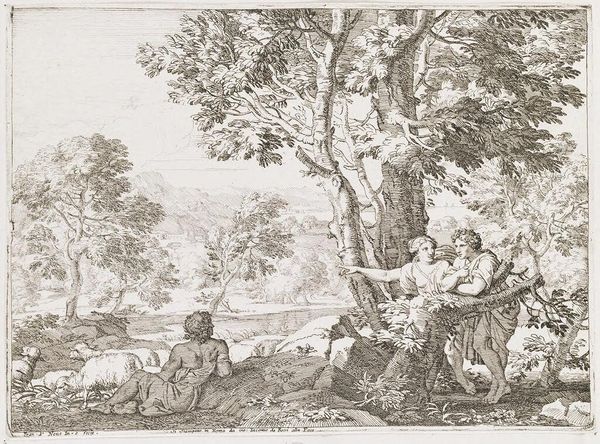
print, etching
#
narrative-art
#
baroque
# print
#
etching
#
landscape
#
figuration
#
history-painting
Dimensions: height 129 mm, width 183 mm
Copyright: Rijks Museum: Open Domain
This etching, "Tobias heals his father's blindness," was made by Moyses van Wtenbrouck in the 17th century. Look closely and you'll notice it's made up of thousands of tiny lines incised into a metal plate. This was achieved through a labor-intensive method. The metal plate is covered with a waxy substance, through which the design is drawn with a sharp needle-like tool. The plate is then immersed in acid, which bites into the exposed lines, creating grooves. These grooves hold the ink, which is transferred to paper under great pressure. This process demanded skill and precision. It allowed for the creation of multiple impressions, democratizing images in a way previously unimaginable. The fine lines evoke a sense of detail and atmosphere, highlighting the texture of the landscape and the emotional weight of the scene. Understanding the etching process allows us to appreciate not only the final image, but also the labor, craft and ingenuity that went into its making. It blurs the boundaries between art and craft, highlighting the value of skilled handwork in art history.
Comments
No comments
Be the first to comment and join the conversation on the ultimate creative platform.
